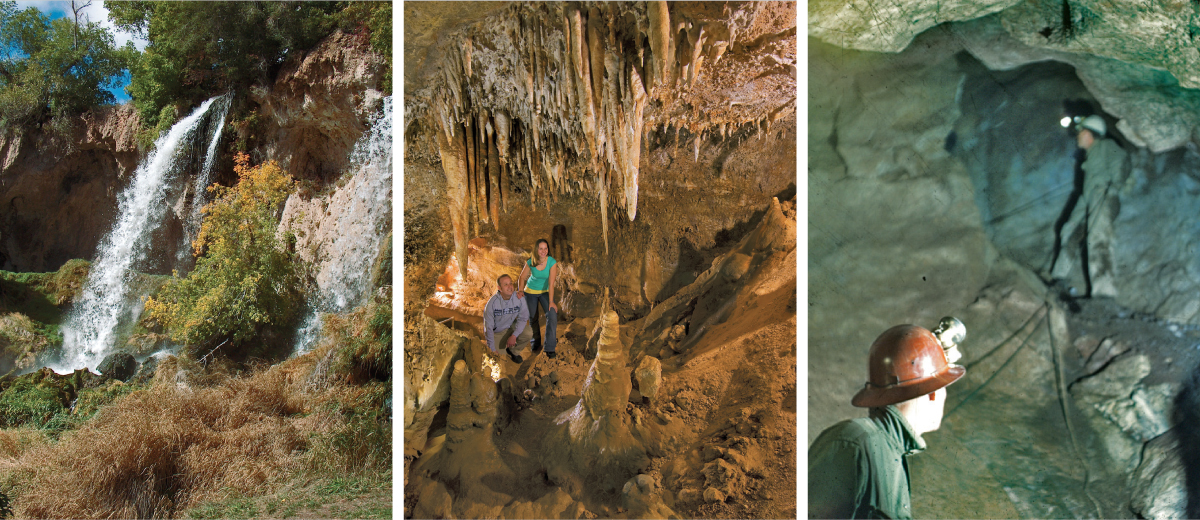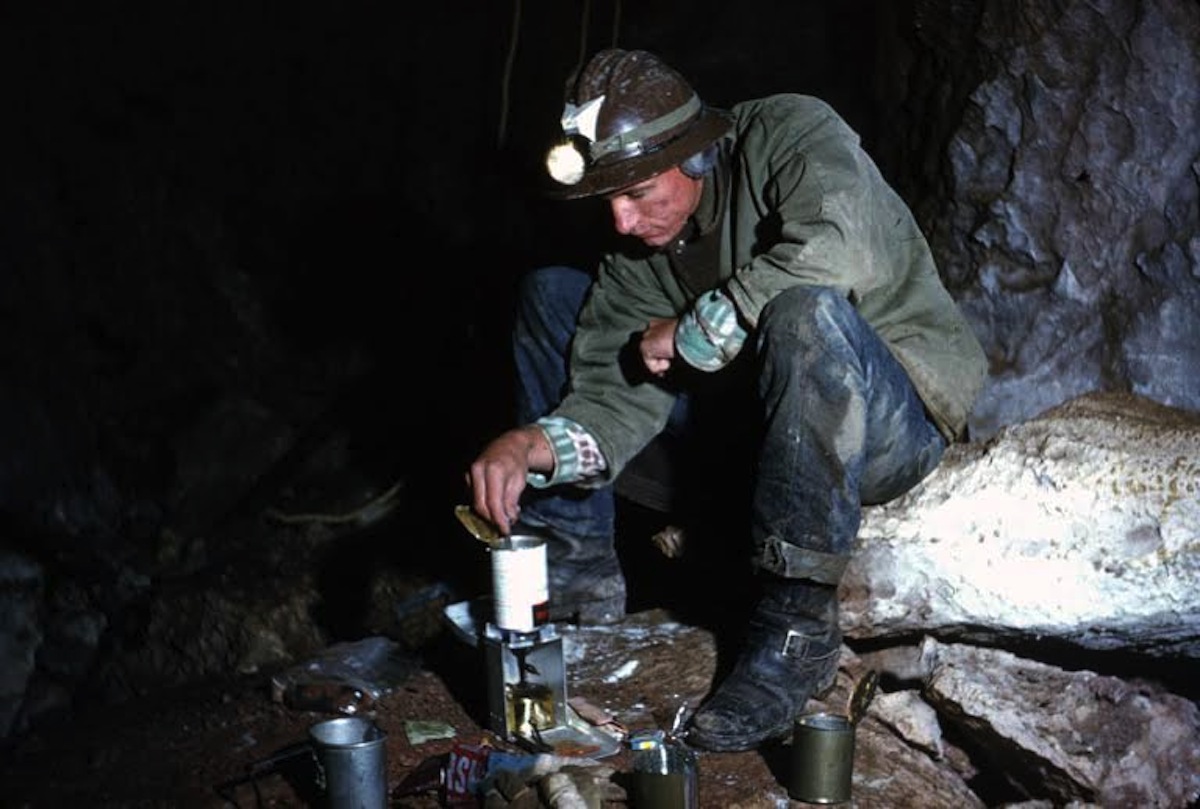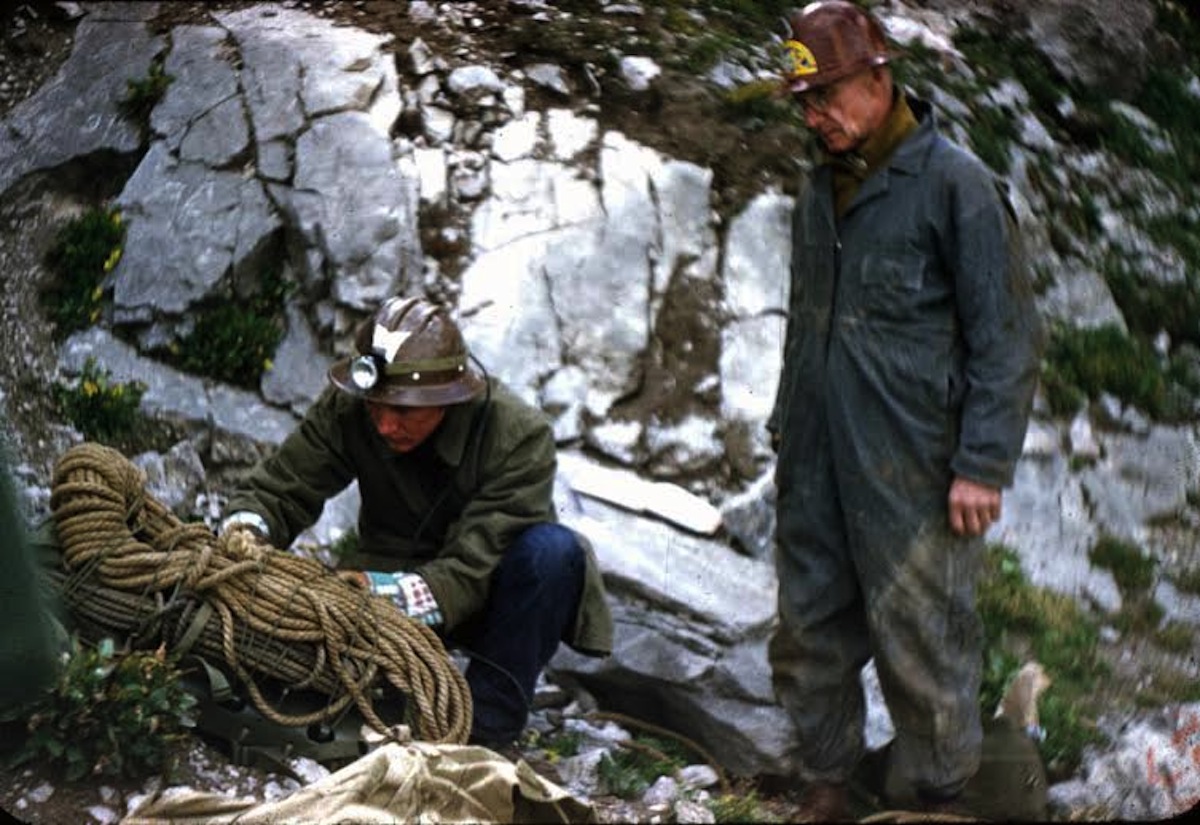The Local newsletter is your free, daily guide to life in Colorado. For locals, by locals.
Mountain majesty may be one thing, but another slice of Rocky Mountain beauty lies beneath the surface of the state’s signature geography: caves, about 2,000 to be more precise (that’s 37 for every one fourteener, folks). Sculpted into layers of limestone, gypsum, adobe, and even hardened chutes of lava, each summer these underground lairs invite outdoor enthusiasts to hike, squeeze, rappel, and occasionally swim through otherworldly scenes straight out of a Jules Verne novel. “It’s a lot cheaper than exploring the deep sea or outer space,” says Richard Rhinehart, avid caver and longtime editor of the quarterly journal Rocky Mountain Caving. For your summer spelunking fix, he recommends these three close-to-home encounters of the subterranean kind.
Beginner
Rifle Falls State Park
Where: Rifle, about 12 miles north of town on CO-325
History lesson: In 1910, the town of Rifle built a hydroelectric plant that split the main waterfall at the entrance to the cave. The water now runs in front of the cave in three sections and is often used as a backdrop for weddings.
What you’ll see: If you want to peer into a cave without getting your hands dirty, this is your place. Rifle Falls’ campground features naturally formed limestone caves, or “rooms,” you can walk through without a stitch of gear. The campground is also home to various hiking trails. In the winter, the falls sometimes freeze, encasing the mouth of the main shelter cave in crystal blue ice.
One more thing: If you plan to camp at Rifle Falls State Park, reserve your spot before your trip. The nearby camping spaces fill up quickly during the summer.
Intermediate
Cave of the Winds
Where: Manitou Springs, about a mile northwest of town on US 24 West
History lesson: In 1875, explorer-photographer James Thurlow snapped a shot of the archway in front of Cave of the Winds, remarking that it reminded him of a natural formation of the same name at Niagara Falls. When Harper’s Magazine published the photo, they ran Thurlow’s remark, and the country’s second Cave of the Winds was born.
What you’ll see: The Cave of the Winds’ Discovery and Lantern tours ($20 and $30 respectively) explore the cave via walking paths. You’ll see smooth rocks known as flowstone. For a darker (read: portable light sources only) and more authentic cave experience, try the summer-only Caving 101 tours ($45), which introduce visitors to less-traveled sections of the cave. After shimmying through narrow passages, you’ll see Heavenly Hall, a sealed chamber thick with crystalline mineral deposits known as beaded helictites.
One more thing: When it’s completed later this summer, the cave’s roller coaster, the Terror-Dactyl, will launch spelunkers off the 200-foot cliff edge of Williams Canyon at nearly 100 mph.
Expert
Spanish Cave
Where: Westcliffe, in the Sangre de Cristo Mountains
History lesson: Spanish Cave got its name in 1923 when a readership war erupted among local newspapers, which resulted in a fictitious tale claiming a pit in the cave held skeletons of Spanish soldiers and gold treasure.
What you’ll see: Spanish Cave is considered one of the highest-elevation caves in the country at just over 12,000 feet. At 741 feet from the upper entrance to the bottom, it’s also the deepest in the state. Pointed rock formations jut from the ceiling and floor, but navigating these is the easiest of Spanish Cave’s challenges: Because of its tight chimneys and pits (rope-work required), adventurers consider Spanish Cave the state’s most difficult to navigate. And that’s if you can find the hard-to-locate opening. Our advice: Go with a guide from a local caving group such as Front Range Grotto or Colorado Grotto.
One more thing: The cave “breathes,” meaning air currents flow through the caverns’ tight chutes, some occasionally strong enough to blow out a carbide lamp.












